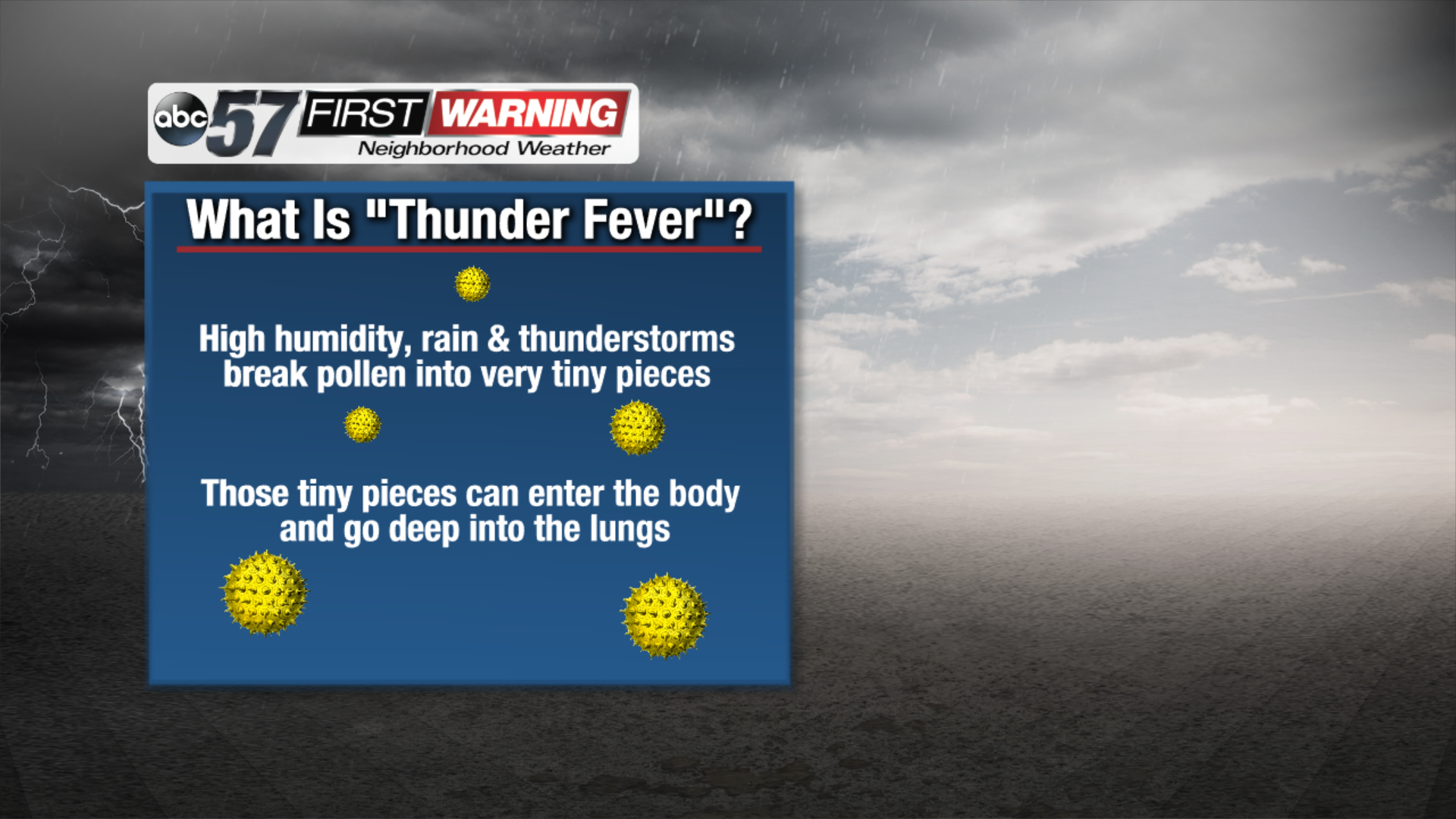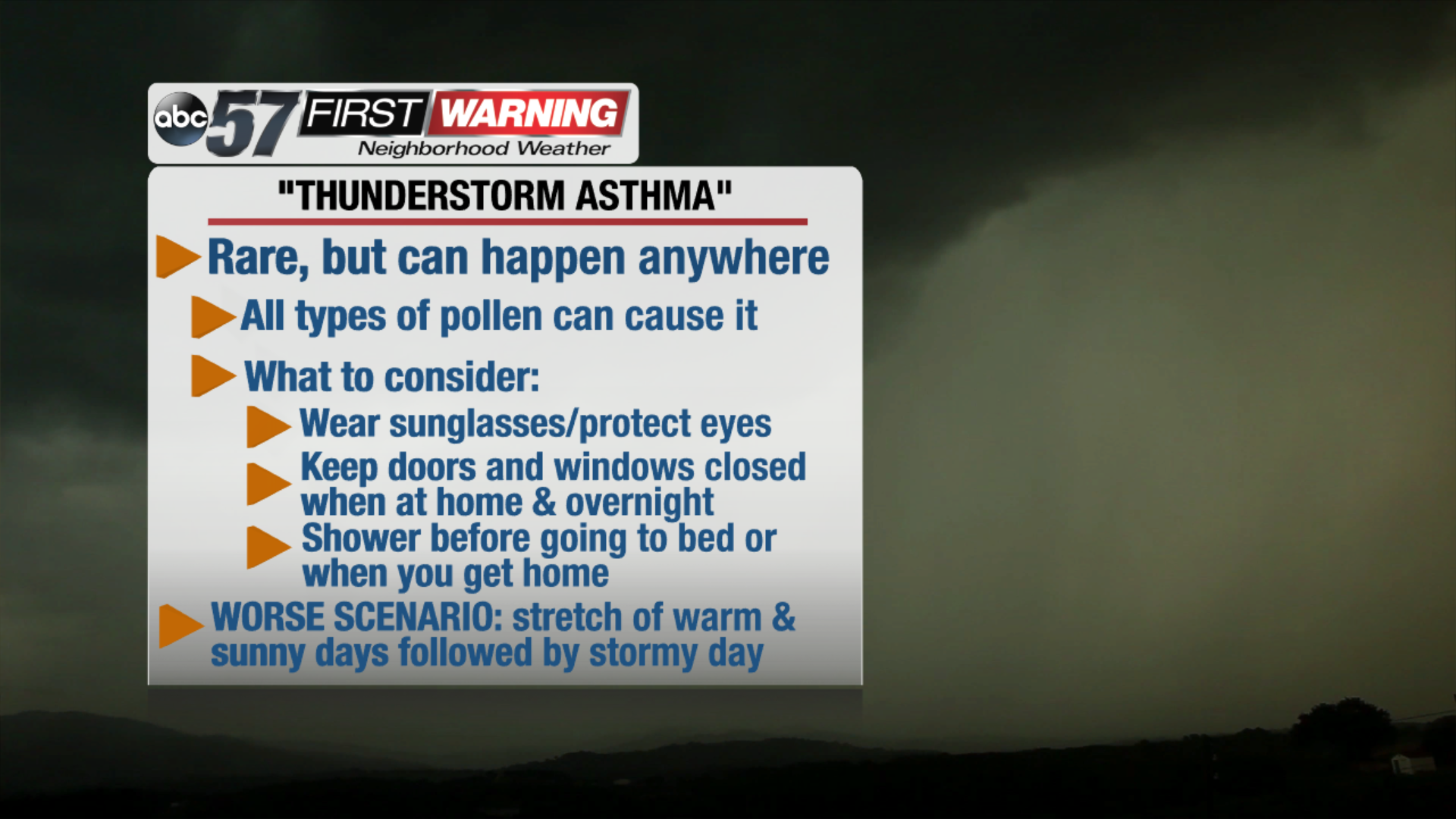'Thunder fever' could impact seasonal allergy sufferers in Michiana
Posted: May 17, 2018 4:09 PM EST
"Thunder fever" is popping up all over the Internet, but what exactly is it? Should you be worried? "Thunder fever" is referred to by some as an extreme version of the more common hay fever. It is a very rare phenomenon, but if it affects allergy sufferers or those with asthma, it can have severe consequences. That includes death. Back in 2016, "thunder fever" killed nine people and sent more than 8,000 others to the hospital in and around Melbourne, Australia.
When a few days of warm, sunny and "stagnant" weather are followed by a day with high humidity and thunderstorms, the respiratory phenomenon becomes possible. The warm, dry days allow the pollen counts to really ramp up. Then, when it rains and storms, the water content in the air actually breaks the bits of pollen down into tinier pieces. The winds associated with the storms can then blow those tiny pieces of pollen deep into someone's lungs and respiratory system due to their very small size.
If those pollen and/or mold particles make their way deep into the respiratory system of someone with asthma, or someone who suffers from seasonal allergies, irritation and inflammation can occur. The result could be an aggressive attack that could prove fatal.
Unfortunately, the pollen count will be high to very high through Sunday. That will be especially true for those locations who dodge showers and thunderstorms throughout the weekend. However, it's that chance of storms Saturday, Sunday and Monday that could make the small pollen and mold particles even more dangerous. If you are a sufferer of seasonal allergies or asthma, it is a good idea to keep your windows shut at home, stay inside as much as possible and shower after venturing outdoors. If you notice your allergies or asthma ramping up to a level you are unfamiliar with, seek medical help immediately.

















